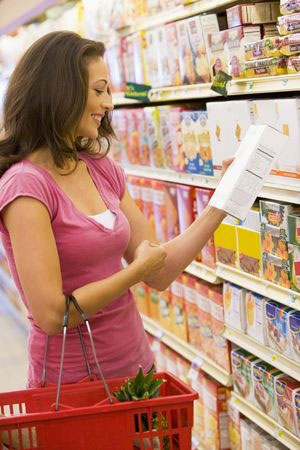 “Organic,” “locally grown,” and “all natural” are three of the hottest buzzwords seen on food labels these days. Consumers are demanding natural products because they equate “natural” with healthy, good, fresh and wholesome. In response, many food brands are rolling out food packaging design that highlight these qualities on their product labels.
“Organic,” “locally grown,” and “all natural” are three of the hottest buzzwords seen on food labels these days. Consumers are demanding natural products because they equate “natural” with healthy, good, fresh and wholesome. In response, many food brands are rolling out food packaging design that highlight these qualities on their product labels.
Companies must be careful about how they label their products, however, as consumers may have an entirely different idea of what constitutes “natural” than companies do. The recent deluge of lawsuits over “natural” claims underscores the importance of defining these terms to cut down on consumer deception and restore trust.
Clean Labels: Balancing Promotion with Trust
While the USDA only adopted national standards for organics in 2002, the US organic food market is experiencing rapid growth. The organic food sector grew by $2.5 billion in 2011, according to the Agricultural Marketing Resource Center. In addition to buying organic, market researchers report that consumers are seeking “natural” products more than ever.
“They (consumers) are very suspicious of things they don’t understand and this translates into being afraid of chemical names they can’t understand,” Mintel’s Lynn Dornblaser, the director of CPG Trend Insight, told the American Egg Board.
Consequently, consumers are attracted to clean labels that have a relatively small number of ingredients that are all easily identified. Consumers want to see ingredients they recognize and trust– and, thanks to the clean labels that highlight these ingredients, consumers are willing to pay more for these food products.
While food packaging design that features clean labels have been a boon for food manufacturers, blanketing labels with “natural” or “free from” claims can be misleading and may actually be backfiring.
Organic Monitor, a research firm that focuses on the global organic industry, says clean labels like “gluten-free” are now being overused on products that would never normally contain gluten, which is leading to consumer exhaustion. For example, gluten-free claims on products have skyrocketed up 6.4% (16.7% of new products currently include a “gluten-free” claim on the label) from just five years ago.
Labeling a bread product “wheat-free” and “gluten-free” makes sense, as bread would normally contain these ingredients. But labeling a yogurt “wheat-free” and “gluten-free” is excessive, since yogurt would never normally have these ingredients.
“The way forward is for food companies to make legitimate claims, and not just for the sake of marketing or appealing to consumers seeking ‘clean products’,” Tina Gill, the PR and Marketing Manager for Organic Monitor, told Food Navigator.
What’s In a Name? The Battle over “Natural”
In the United States, the Food and Drug Administration has refused to formally define “natural,” saying that the term itself is misleading. In order to achieve transparency in food labeling, however, some industry analysts say that defining this term is essential.
“A definition would never be perfect, but we shouldn’t let perfect be the enemy of the good,” CSPI director of litigation Steve Gardner told delegates at the FoodNavigator-USA Natural & Clean Label online forum.
Gardner is advocating for a clear definition of “natural”, which would cut down on consumer deception and eliminate lawsuits. That’s good for both consumers and the food industry.
The Bottom Line on Food Packaging Design
While clean labels make a difference in purchasing choices, it’s also important that packaging designs don’t mislead customers. The only surefire way to restore consumer confidence and trust would be to clearly define “natural” and to use such labels sparingly and only when appropriate.
“Natural” claims on food packaging design continue to resonate with consumers who are voting with their wallets in favor of foods that are minimally processed, sustainably sourced and produced, and made with organic ingredients. A clear definition of “natural” will help consumers understand exactly what they are purchasing and restore consumer confidence.







